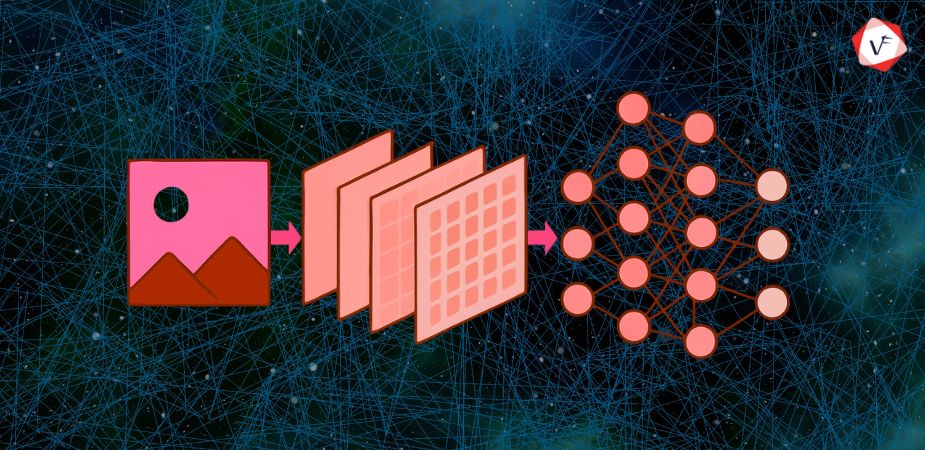
- February 03, 2025 1:37 pm
- by Safvana
What is a serverless architecture? Benefits and Strategies
- February 03, 2025 1:37 pm
- by Sooraj
Serverless architecture is a modern way of building and running applications without managing the underlying infrastructure. It allows developers to focus on writing code, while the cloud provider takes care of server management, scaling, and maintenance. In this blog, we'll explore what serverless architecture is, its benefits, and strategies for using it effectively.
What is Serverless Architecture?
Serverless architecture, also known as Function-as-a-Service (FaaS), is a cloud computing model where the cloud provider automatically manages the server infrastructure. This means developers can run their applications without worrying about the hardware, operating system, or server maintenance.
In a serverless setup, developers write small units of code called functions. These functions are triggered by events, such as an HTTP request, a file upload, or a database change. The cloud provider executes these functions, scaling the resources up or down as needed.
Advantages of Serverless Architecture
Saving money:
- Pay-as-You-Go: With serverless architecture, you only pay for the compute time you use. This means you don’t have to pay for idle server time, resulting in significant cost savings.
- No Infrastructure Costs: Since the cloud provider manages the servers, you don’t need to invest in expensive hardware or pay for server maintenance.
Scalability:
- Automatic Scaling: Serverless architecture automatically scales your application based on demand. If there’s a spike in traffic, the cloud provider will allocate more resources to handle the load.
- Handles Peak Loads: This automatic scaling ensures that your application can handle peak loads without any manual intervention.
Simplified Management:
- No Server Management: Developers don’t have to worry about server maintenance, patching, or scaling. This frees up time to focus on writing code and building features.
- Reduced Complexity: By eliminating the need to manage infrastructure, serverless architecture reduces the complexity of application deployment and management.
Faster Time-to-Market:
- Rapid Development: Serverless architecture allows for rapid development and deployment. Developers can quickly build and deploy functions without worrying about server provisioning.
- Iterative Development: This model supports iterative development, enabling developers to make changes and deploy updates quickly.
Improved Resource Utilization:
- Efficient Resource Use: Serverless architecture ensures that resources are only used when needed. This efficient resource utilization reduces waste and improves performance.
- Environmentally Friendly: By optimizing resource usage, serverless architecture can also have a positive impact on the environment.
Strategies for Using Serverless Architecture
Choose the Right Use Cases:
- Event-Driven Applications: Serverless architecture is ideal for event-driven applications, such as webhooks, IoT applications, and real-time data processing.
- Microservices: Breaking down your application into smaller, independent functions can improve modularity and maintainability.
Optimize Function Performance:
- Efficient Coding: Write efficient and optimized code to ensure your functions perform well. Avoid long-running processes and optimize memory and CPU usage.
- Cold Start Optimization: Minimize the impact of cold starts by keeping functions warm or using provisioned concurrency features provided by cloud providers.
Monitor and Debug:
- Logging and Monitoring: Implement robust logging and monitoring to track function performance and identify issues. Use tools like AWS CloudWatch, Azure Monitor, or Google Cloud’s Stackdriver.
- Debugging Tools: Utilize debugging tools provided by your cloud provider to troubleshoot and resolve issues quickly.
Security Best Practices:
- Least Privilege Access: Implement the principle of least privilege by granting functions only the permissions they need to perform their tasks.
- Environment Variables: Use environment variables to manage configuration settings securely, avoiding hard-coding sensitive information in your code.
Cost Management:
- Monitor Usage: Regularly monitor your function usage and costs to identify any inefficiencies or unexpected expenses.
- Optimize Resource Allocation: Optimize resource allocation by setting appropriate memory and timeout settings for your functions.
Vendor Lock-In Awareness:
- Abstract Logic: Abstract your business logic from platform-specific services to minimize vendor lock-in. This can make it easier to migrate to a different provider if needed.
- Multi-Cloud Strategies: Consider a multi-cloud strategy to avoid dependency on a single cloud provider and increase redundancy.
Testing and Quality Assurance:
- Automated Testing: Implement automated testing for your functions to ensure they perform correctly. Use tools like AWS SAM, Azure Functions Core Tools, or Google Cloud Functions Framework for local testing.
- Continuous Integration/Continuous Deployment (CI/CD): Set up CI/CD pipelines to automate the deployment process and ensure consistent code quality.
Common Use Cases for Serverless Architecture
Web Applications:
- APIs and Microservices: Serverless architecture is well-suited for building APIs and microservices. Functions can handle specific tasks, such as processing user requests, interacting with databases, or managing authentication.
- Static Websites: Hosting static websites using serverless services like AWS S3 and deploying serverless functions for dynamic interactions can be a cost-effective and scalable solution.
Data Processing:
- Real-Time Data Processing: Serverless functions can process data in real-time, making them ideal for applications that require immediate data analysis and response.
- Batch Processing: For tasks that involve processing large amounts of data in batches, serverless functions can be triggered to run periodically, ensuring efficient data handling.
Internet of Things (IoT):
- Device Communication: Serverless functions can handle communication between IoT devices and cloud services, processing data and sending commands as needed.
- Event Handling: Serverless architecture can manage events generated by IoT devices, such as sensor readings or device status updates.
Backend Services:
- User Authentication: Serverless functions can manage user authentication and authorization, integrating with identity providers and handling security protocols.
- Notifications and Alerts: Sending notifications or alerts based on specific events can be efficiently managed using serverless functions.
Automation and Integration:
- Workflow Automation: Serverless functions can automate workflows by integrating various services and performing tasks based on predefined triggers.
- Third-Party Integrations: Integrating with third-party services, such as payment gateways or CRM systems, can be streamlined using serverless functions.
Final Thoughts
Serverless architecture offers a powerful and flexible way to build and deploy applications without the burden of managing servers. By leveraging the benefits of cost savings, scalability, simplified management, faster time-to-market, and improved resource utilization, businesses can innovate and respond to market demands more effectively.
However, successful implementation of serverless architecture requires careful planning and consideration of strategies such as choosing the right use cases, optimizing function performance, monitoring and debugging, following security best practices, managing costs, being aware of vendor lock-in, and ensuring robust testing and quality assurance.
By understanding and applying these strategies, you can harness the full potential of serverless architecture, creating efficient, scalable, and resilient applications that drive your business forward in the digital age.
### **Exploring AWS Serverless Architecture, Azure Serverless Architecture, and Google Serverless Architecture for Modern Computing Needs**
When it comes to serverless computing, understanding AWS serverless architecture,
Azure serverless architecture, and Google serverless architecture is essential. AWS serverless architecture offers a wide range of AWS serverless services that simplify computing architecture and enable seamless serverless computing. Similarly, Azure serverless architecture and Google serverless architecture provide robust solutions for serverless architecture needs. Whether you’re exploring serverless AWS, serverless computing, or computing architecture, these platforms redefine how businesses approach serverless architecture. From AWS serverless services to Google serverless architecture, each platform delivers unique benefits for serverless computing. Dive into the world of AWS serverless architecture, Azure serverless architecture, and Google serverless architecture to transform your computing architecture today!




